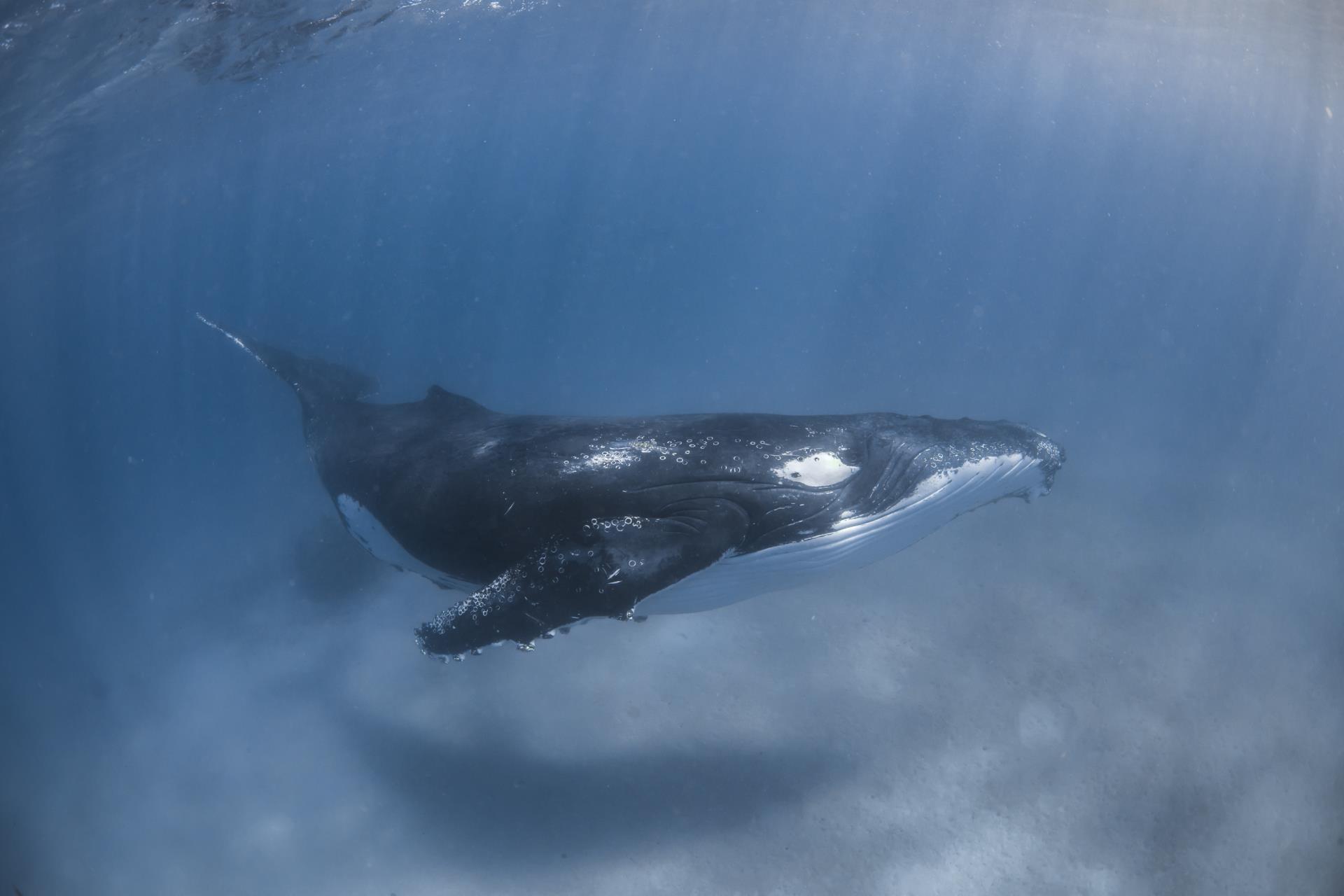
Winter Whale Watching
Enjoy the thrill of whale watching along our coastline from the air, water or land. Every year from June to November, 40,000 humpback whales migrate between their summer feeding grounds in Antarctica to their winter breeding grounds at the North West Shelf.
The Humpback whales come close to the shoreline enabling you to see them clearly with the naked eye. Every year the whales come into the waters between Bernier and Dorre Islands and the mainland at Carnarvon on their migration. You can often see the cow playing and teaching her calf in the calm waters off Point Quobba and Pelican Point in Carnarvon and further north at Red Bluff, Gnaraloo, Warroora and Coral Bay.
Coral Coast Helicopters offer scenic flights from Carnarvon. During the migration period it is not uncommon to come across the whales as they make their way north or back south to their feeding and breeding grounds.
In Coral Bay there are a number of boat charters and tours in which you can view these incredible giants of the sea and so many other amazing marine creatures.
You may be lucky enough to spot other whale species, such as orcas, false killer whales, minke whales, bryde whales and blue whales.
With our gorgeous sunny winters relaxing on the beach or along the rocky cliff tops along our rugged coast, watching the whales is a very relaxing yet exhilarating way to pass the time away.
HUMPBACK WHALE FACTS
The humpback whale can live for 45 to 50 years growing up to 15 - 18 metres long. Humpbacks can weigh in at 36.3 tonnes. They are a baleen whale which are filter eating animals, mostly feeding on copepods (plankton) and krill and can consume up to 30 tonnes a day.
Females calve once every three years and have a twelve month pregnancy. A newborn calf can weigh as much as 1.5 tonnes and measure around 3 to 5 metres in length. A calf will drink about 10% of their weight daily in milk. The calf will grow rapidly up to 8 to 9 metres. The mother nurses the calf for 5 months and sometimes up to a year.
